Hail Resistant Roof: Are Class 4 Impact-Resistant Shingles Worth The Investment?
Of all the risks that are associated with shortening the life of a roof, hail is among the most feared. Hail-resistant shingles bring some peace of mind, but how impact resistant are they? When storms with high wind include hail, homeowners are rightfully nervous, because hail doesn’t have to penetrate a shingle to damage it. In fact, rarely does hail do more than bounce off shingles, but there are times when the wind is fast enough that the damage, perhaps barely visible, will be significant enough to require the attention of a roofing professional.
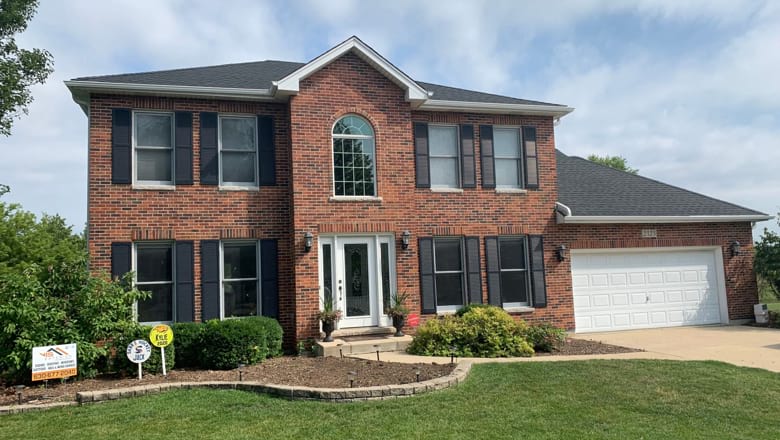
Class 4 impact-resistant shingles are highly sought after by homeowners who want maximum protection. These are shingles designed to withstand the impact of debris at up to 110 to 130 miles per hour. When someone talks about a “hail-resistant roof,” they’re often describing one that has Class 4 shingles installed. A severe thunderstorm in the Midwest can generate wind gusts between 58 and 74 miles per hour, so when you have Class 4 shingles installed, you know your roofing system will be in good shape after a heavy storm.
Table of contents:
- WHY IS IMPACT RESISTANCE IMPORTANT?

- WHAT ARE CLASS 4 IMPACT-RESISTANT SHINGLES?

- UNDERSTANDING HOW IMPACT-RESISTANT SHINGLES ARE MADE

- DETERMINING IMPACT RESISTANCE: UL 2218 CLASS 4 TESTING

- THE DIFFERENT CLASSES OF IMPACT RESISTANCE

- WHO SHOULD CONSIDER INSTALLING A CLASS 4 ASPHALT SHINGLES ROOF?

- BENEFITS OF CLASS 4 IMPACT-RESISTANT ROOFING SHINGLES

- DISADVANTAGES OF IMPACT-RESISTANT ROOFING

- HOW MUCH DO IMPACT-RESISTANT SHINGLES COST?

- CLASS 4 IMPACT-RESISTANT SHINGLES VS REGULAR ASPHALT SHINGLES COST

- CLASS 4 IMPACT-RESISTANT SHINGLES INSURANCE CLAIMS AND DISCOUNTS

- THE BEST CLASS 4 ASPHALT SHINGLES IN THE MARKET

- GAF CLASS 4 SHINGLES

- OWENS CORNING CLASS 4 SHINGLES

- CERTAINTEED CLASS 4 SHINGLES

- MALARKEY LEGACY CLASS 4 SHINGLES

- IKO NORDIC CLASS 4 SHINGLES

- ARE CLASS 4 IMPACT-RESISTANT SHINGLES WORTH YOUR INVESTMENT?

- IMPACT-RESISTANT ROOFING COST VS. LONG-TERM VALUE

- FREQUENTLY ASKED QUESTIONS ABOUT CLASS 4 SHINGLE ROOFING

Why is impact resistance important?
The quality of a roof matters because it protects everything under it. Furthermore, a good roof keeps occupants comfortable during times of extreme heat and extreme cold. A hail-proof roof adds that extra layer of protection allowing homeowners the opportunity to relax when the spring and summer hail storms roll through the region. In fact, impact-resistant shingles have become the norm with quality roofing contractors who want to do everything they can to protect their clients’ homes for as long as possible.
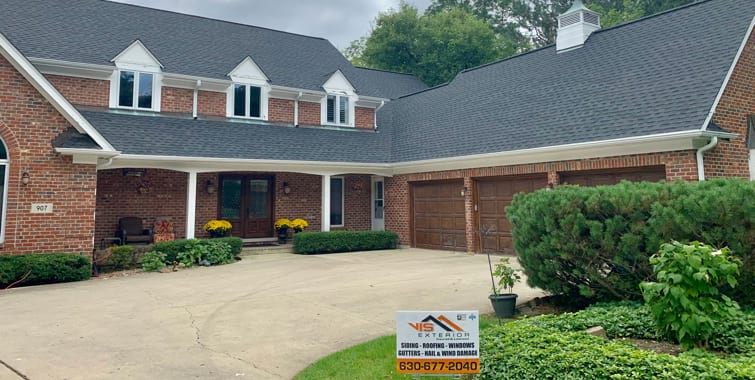
There are various levels of impact-resistant shingles, but among the most durably designed are the Class 4 roofing products, which have been labeled as “hail proof,” but only to a certain degree. While it is rare that a severe thunderstorm will produce winds that top 90 miles per hour, when it does happen, such as during tornadic events, there is basically no roofing product that can stand up to that kind of abuse. Fortunately, storms of that severity are rare.
What are Class 4 impact-resistant shingles?
While the term “hail proof” is used often, the terminology most roofing professionals use is “impact resistant,” because high winds kick up debris, such as limbs and other objects, that can damage shingles. The shingles are engineered to minimize the effects of impact, whether it’s hail or any other type of airborne object. So, if the question is, “what are Class 4 shingles?” the answer is that they are the most impact resistant on the market.
To get answers to, “what are impact-resistant shingles able to withstand?” researchers will test them with a steel ball in various sizes. When the impact is the same as what is caused by a hailstone hitting the shingle at 90 miles per hour and there is no damage, the shingle can then be rated as “Class 4.” This rating was established in 1996, and ever since then contractors and homeowners have held these as the gold standard in impact-resistant shingles.
Understanding how impact-resistant shingles are made
Roofing material manufacturers have evolved over the many years that shingles have been produced. They continually invest in research and development to find new ways to improve the durability of their products so roofs are protected from flying debris, including hailstones. If you hear a roofing contractor mention “IR” shingles, they are referring to “impact-resistant” products that are built to higher standards.
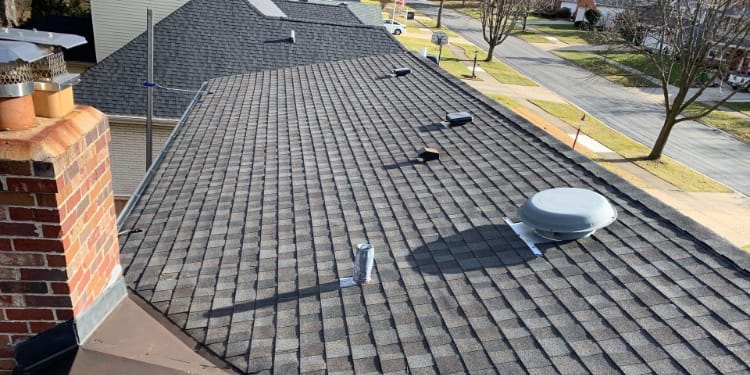
So, what are impact-resistant roofs made of? The main advancement in these shingles is polymer-modified asphalt which allows the shingles to absorb the force of impact, preventing the shingle from being damaged. The base material is usually a fiberglass mat, but can also be organic felt. The asphalt coating provides waterproofing, but it is also the main protective barrier. A granule surface is added for protection against UV rays, but also adds additional resistance to impact. Elastomeric material, which is often referred to as the modified polymer, increases flexibility and prevents cracking.
There are two types of hail-resistant asphalt roofing shingles:
SBS (Styrene-butadiene-styrene)
During the manufacturing process of the impact-resistant asphalt shingle, a rubber-like material is added. This material, styrene-butadiene-styrene (SBS), is often just referred to as a polymer. It’s used to provide flexibility, allowing debris to simply bounce off the shingle rather than penetrate it.
Polymer-based mesh
Some impact-resistant shingle manufacturers will use a polymer mesh to provide flexibility and protection against cracking. The most common application is to add it to the back of the shingle where the embedded mesh holds everything together, stopping the shingle from cracking or splitting when impacted.
Determining impact resistance: UL 2218 Class 4 testing
UL 2218 refers to the impact test standard, which involves dropping a steel ball on shingles to test their resistance. To earn a Class 4 designation, the shingle has to hold up to a 2-inch steel ball being dropped from a height of 20 feet. A shingle that is not built to the Class 4 standard will be damaged by the steel ball.
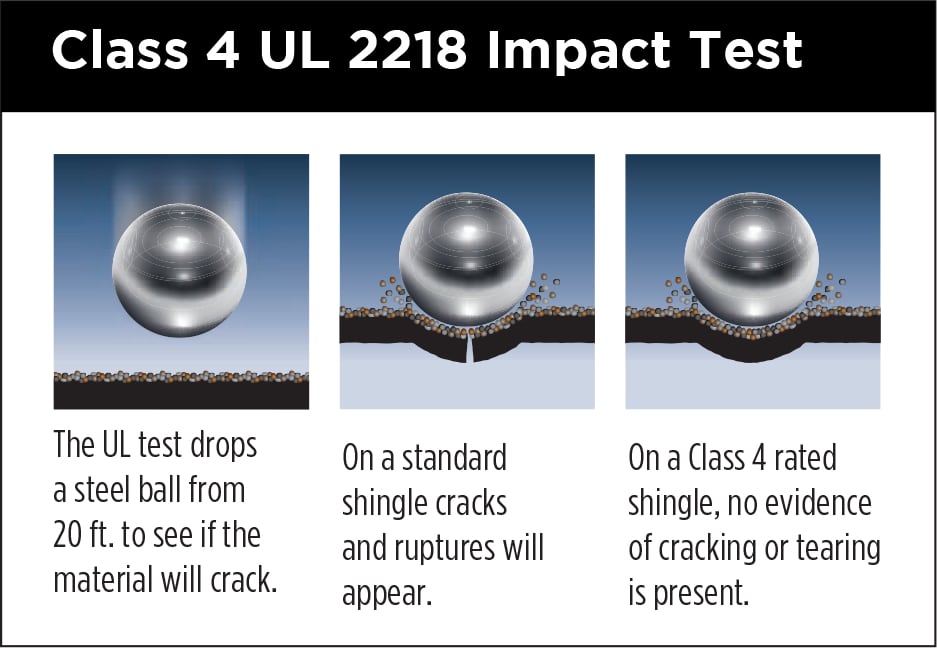
During the testing, the impact-resistant shingles are hit twice in the same spot with the steel ball. Testing personnel will then look at the backing of the shingle for indentations, tears or any other type of deformity. This is often referred to as the “steel ball test” and was established by Underwriters Laboratories in the mid-1990s.
The most common damage witnessed in the steel ball test is crushed granules, which adhere to the top layer of the shingle. Researchers will even use microscopes to get a finer view of the damage caused by the steel balls. However, to be considered a failure, the impact must leave a visible tear or crack on the backing of the shingle, which means the projectile has penetrated all layers of the shingle.
The different classes of impact resistance
Impact-resistant shingles come in four classes. The roof impact-resistance ratings range from Class 1, being the least resistant to impact, up to Class 4, being the most resistant. As an example of what other classes of shingles can handle, to earn the Class 1 designation, the shingle has to hold up to the impact of a steel ball 1.25 inches in diameter. Class 2 will withstand a ball 1.5 inches in diameter, and Class 3 will not be damaged by a 1.75-inch ball dropped from 20 feet.
Why is 20 feet the standard in the UL 2218 test? Scientists have determined that the kinetic energy created with a drop from 20 feet matches that of a hailstone in a thunderstorm.
Here is a table summarizing the differences between the four available classes:
Class 1
A 1.25-inch steel ball is dropped twice from 12 feet high.
Class 2
A 1.5-inch steel ball is dropped twice from 15 feet high.
Class 3
A 1.75-inch steel ball is dropped twice from 17 feet high.
Class 4
A 2-inch steel ball is dropped twice from 20 feet high.
A two-inch steel ball creates a lot of force and is actually bigger than the damaging “golf ball” hail you’ve probably heard about. It’s important to note that hail that size is rare, which begs the question: do you really need Class 4 shingles? For peace of mind, most homeowners will answer “yes.” However, many homes are well protected by Class 3 shingles.
Building codes might also dictate what class of shingle you’re supposed to use, such as in areas where damaging hail storms are the norm. Whether it’s a county or municipality rule, you could be required to use Class 4 shingles for the most protection available.
Who should consider installing a Class 4 asphalt shingles roof?
Impact-resistant roofing will ensure that your home is protected, but who is the ideal candidate for Class 4 asphalt shingles? The most obvious are homes in areas where damaging hail storms occur frequently. Think of the expense of going through roof replacements year after year because you didn’t choose the right shingle. Your roofing contractor should help you make the decision, because in some cases, Class 2 and 3 are sufficient.
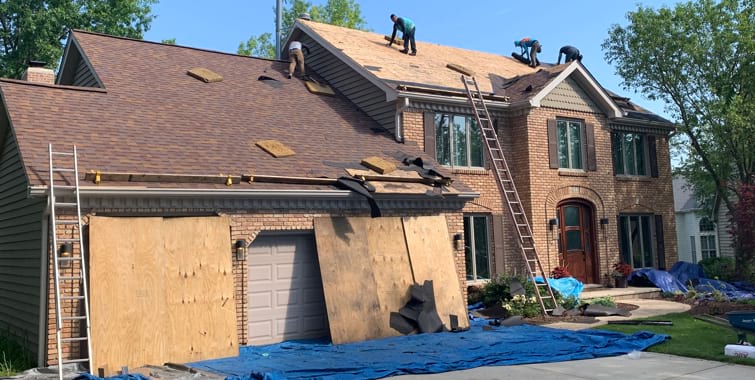
Here are the reasons why you should install impact-resistant shingles on your home:
If you live in an area with frequent hailstorms
Yes, Class 4 shingles cost more because they are built far more durable than less costly shingles. If you live in an area that experiences frequent hailstorms, this would be money well spent. While hail can happen anywhere, the most extreme storms occur throughout the Midwest and down into Texas where the number of hailstorms is the highest of any state.
You’ll notice that Illinois did not make the list of the top five states where the most hailstorms occur, but check out this data from the Insurance Information Institute:
- Texas: 688 hail storms
- Kansas: 303 hail storms
- Nebraska: 225 hail storms
- South Dakota: 218 hail storms
- Oklahoma: 159 hail storms
Residents in these states are the most likely to have Class 4 shingles installed on their roofs. Impact-resistant shingles are not necessary in states or areas where hailstorms are infrequent, but making that decision should involve input from your roofing contractor.
If your home is surrounded by trees
Hail storms aren’t the only reason to have Class 4 shingles installed on your home. For example, if you’ve got trees nearby, a strong wind gust can snap off parts of the tree and send them on a collision course with your roof, so you need extra protection. Keep in mind that if a large limb falls on the roof, there is no shingle that will withstand that type of impact.
If extreme weather conditions are common in your state
Another big risk is hurricanes, tornadoes, blizzards and just plain old windy days. Each of these events generates a lot of debris that becomes airborne and can collide with your roof. Again, having that extra protection that Class 4 shingles provide could keep your home damage free in these situations.
There’s no doubt having Class 4 shingles provides added protection, and this will ease the stress for homeowners living in areas where high winds, hailstorms and other risk factors prevail. Before making a decision on what class of shingles you get for your home, talk it over with your roofing contractor.
Benefits of Class 4 impact-resistant roofing shingles
We have established that Class 4 impact-resistant shingles are some of the most durable asphalt shingles on the market, able to withstand the impact of projectiles of everything from hail to debris kicked up in high winds, but what about their other benefits? Let’s take a deeper dive into the specifics.
Lower frequency of roof damage repair
Responsible homeowners will request a roofing contractor inspect the entire roofing system as part of the regular maintenance protocol and especially after big storms.
As the roof ages, repairs will need to be made to prolong its life, but at some point, it makes more financial sense to completely replace the roof.
With Class 4 shingles, you have fewer repairs to worry about and less costs associated with maintenance. Homeowners in areas that sustain frequent storms will particularly benefit from the durability offered by Class 4 shingles.
Extended lifespan of your roof
Who doesn’t want to get the most life they possibly can out of their roof? Most roofing contractors will tell you that a new roof will last at least 20 years, but when you have Class 4 roofing shingles installed, the shingles’ ability to hold up to flying debris definitely adds years onto the expected life span of the roofing system.
With the added measure of frequent maintenance, you could see a minimum of 30 years of life out of your Class 4 impact-resistant shingles.
Protection against fire
Unlike wood shingles, asphalt shingles offer some fire resistance. In fact, there are three levels of fire resistance with Class A being the highest. Fortunately, asphalt shingles fall into the Class A category.
Longer manufacturer warranty
All reputable shingle manufacturers offer a warranty on their products, but the longest warranties are assigned to products that are the most durable. Most Class 4 shingles have a 50-year rating and carry a much longer warranty than less durable shingles, such as Class 1 or 2 shingles.
Eligible for homeowners insurance discounts
Looking for a discount on your insurance? This is yet another reason why going the extra step and expense with Class 4 shingles pays off, because insurance companies are more inclined to give you a break on premiums when they know you’re less likely to file a damage claim.
The savings will vary per insurance company, but it’s not unheard of to get up to a 25% discount.
Less worry about rising insurance premiums
One way insurance companies milk money out of you is by raising your premiums after filing a claim. With Class 4 shingles, you’re less likely to sustain damage that would prompt you to file a claim.
Talk to your insurance company about other benefits you might gain from having Class 4 shingles installed.
Increased resale value
Whether you’re planning on putting your home on the market or getting some equity out of it, having Class 4 shingles on your roof will be a favorable consideration because of the value they add to the home.
In fact, the “Remodeling Impact Report” from the National Association of Realtors shows that of all the exterior projects on a home that increase its value, none add as much value as a new roof.
While offering protection to your home is the most attractive aspect of Class 4 shingles, the other benefits can be quite attractive and become an important consideration when it comes time to choose the shingles you’ll use in your roofing project.
Disadvantages of impact-resistant roofing
Given the enormity of some storms, including tornadoes that can completely demolish a home, there is truly no such thing as a “hail proof” roof. Even with Class 4 shingles on your roof, when Mother Nature brings her fury, no structure is completely safe. Impact-resistant roofing merely “resists” impact – it isn’t immune to it. Class 4 hail-resistant shingles will hold up to normal to severe storms quite well, but year after year of exposure to harsh elements will eventually wear down the shingles.
One of the major disadvantages that influence homeowners’ decisions about choosing Class 4 shingles is their cost. Even though there are side benefits that will save you money and add value down the road, the cost of entry is too much for homeowners on a limited budget. Furthermore, you won’t see a hail warranty on shingles, even impact-resistant shingles.
Being less prone to damage is the most important quality Class 4 shingles bring to homeowners. While they cost more than less durable shingles, there is also less maintenance associated with them and they last longer than other shingles. From increasing the value of a home to offering assurances that the roof will hold up under normal hailstorms, it is difficult to find much negative to say about these quality shingles.
How much do impact-resistant shingles cost?
Impact-resistant shingles cost more than shingles that aren’t built to the same specifications, but how much more? The cost will vary from manufacturer to manufacturer and the cost also depends on various other factors that can dictate the fluctuations over the course of the year. On average, you can expect to pay $45 to $55 per bundle. Each bundle covers 33.3 square feet. The average home in the Chicago area has 2,000 square feet of roof, which means it will cost between $2,700 and $3,300 for the shingles alone.
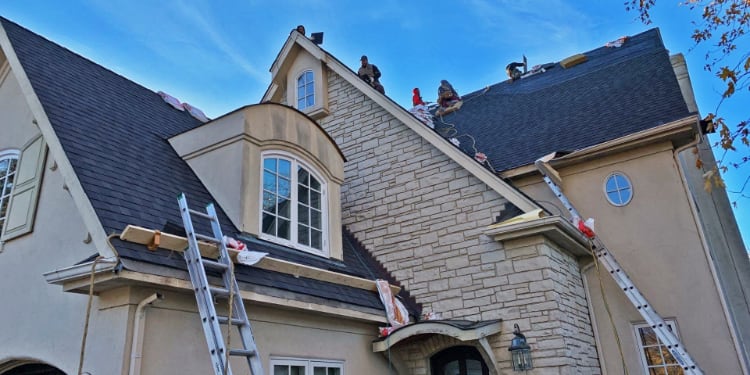
But you need more than just shingles to reroof a home, which means there are other costs for items like nails and underlayment, vents and flashing. This will run you about $800 to $1,000 per 2,000 square feet of roof.
Fortunately, the labor costs stay the same whether the shingles are Class 1 or Class 4. However, labor, which is the most vital component in any roofing project, is also the most costly part of it. A quality roofing contractor will charge between $5,000 and $7,000 for their installation services. Homes that are more difficult to work on (usually because the angle of the roof is steeper) will incur more labor costs than those that are flatter and easier to work on.
The grand total to have the best Class 4 shingles installed on your home, which includes labor and materials, will cost between $8,500 and $11,300.
Class 4 impact-resistant shingles vs regular asphalt shingles cost
Impact-resistant shingles vs. regular shingles: which one wins out? That’s a good question and one that you will want to fully investigate before making the decision for your home. You’re going to pay more for Class 4 impact-resistant shingles because they are more costly to manufacture. The perk is that you get a more durable shingle that will hold up to hailstorms, whereas regular shingles will not.
Depending on the manufacturer and various market situations, the cost for impact-resistant shingles will be anywhere from 10% to 25% more than regular shingles. That might be more than a homeowner with a modest budget can handle, but you have to consider that the longer life and lack of maintenance these more durable shingles provide can save you money in the long term. Also, you have to take into account that insurance companies often offer discounts to homeowners with Class 4 shingles on their homes.
But how much longer will impact-resistant shingles last? The average, well-constructed regular shingle will give you 15 to 30 years of protection. The impact-resistant shingles will offer 30 to 50 years of protection. To ensure you get the most out of your shingles, hire a quality roofing contractor to do the installation for you.
Class 4 impact-resistant shingles insurance claims and discounts
While there is plenty to rave about regarding the durable construction of the Class 4 shingles, homeowners also love to see a discount from their insurance agency. These agencies get hit time and again with claims related to hail-damaged roofs, so when a customer comes to them with Class 4 shingles, they are readily offering a discount because they know that unless the storm is a rare one that brings higher than 90 mph winds, that roof will be undamaged.
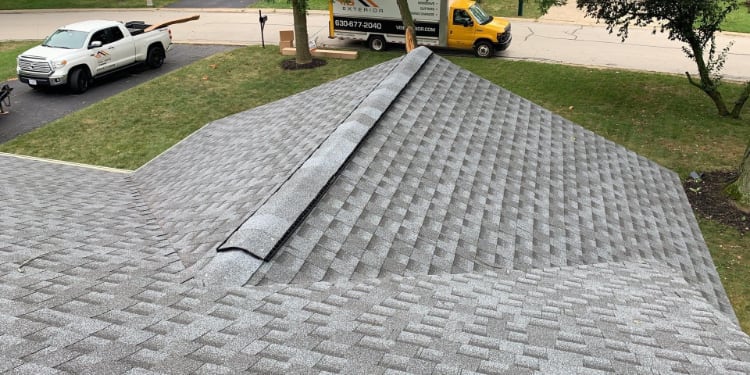
With an average of $12,000 per hail damage claim, it’s easy to see how billions of dollars are spent annually by insurers. Because of this, they are eager to reward homeowners who go the extra mile and have Class 4 impact-resistant shingles installed on their roofs, as they know they are less likely to file a claim due to hail damage.
The discount you could receive from your insurance agency on Impact-resistant shingles can range between 20% and 28%, and this will vary depending on your location and the insurance company. If you’re having your roof replaced and are upgrading from regular shingles to Class 4 shingles, be sure to fill out all the documentation certifying that you’re having the more durable shingles installed, as the insurance company will likely require this information. This will most likely include the name of the shingles, when they were installed and by whom.
Another thing to look for is the Energy Star tax reduction that you can get on asphalt shingles that are made with granules that help keep the roof cool. The maximum reduction is 10% of the cost of the shingles.
The best Class 4 asphalt shingles in the market
The best Class 4 asphalt shingles are made by trusted brands that so many roofing contractors use for all types of shingles. Three of the big ones are Owens Corning, GAF and CertainTeed. These are companies that have put a lot of research and development into their products and bring the best impact-resistant shingles to the market. Talk to your roofing contractor about Class 4 shingle brands they trust.
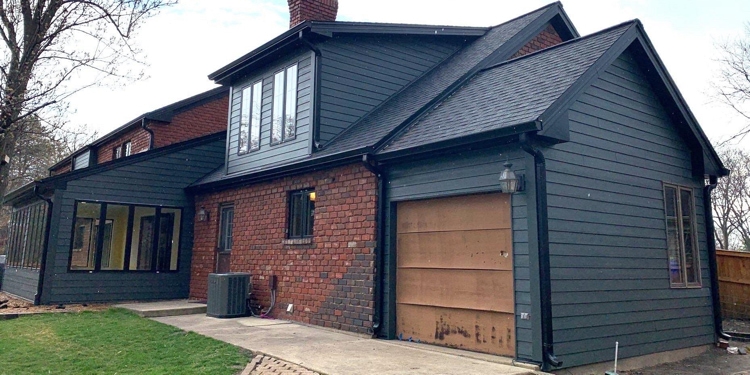
Here are some of the best Class 4 shingles in the market in no particular order:
GAF Class 4 shingles
GAF Class 4 shingles are quite popular with homeowners and roofing contractors alike. By 1967, the company had become one of the top sellers of asphalt shingles, including the Timberline line of shingles that were among the most durable in their day. GAF continues to release new products that lead the industry.
GAF Timberline AS (ArmorShield) II Class 4 shingles
Holding onto the Timberline name, GAF has improved the original with GAF Timberline AS II ArmorShield shingles that have a Class F wind rating. Underwriters Laboratories, which certified the shingles with its wind rating, has determined that this line can withstand maximum wind gusts up to 130 miles per hour. Also, the shingles are made with the patented Dura Grip Adhesive seals, which hold it tightly to the roof and reduce the risk of blow off. With GAF ArmorShield shingles on your roof, you get top-of-the-line GAF Class 4 shingles.
Excellent wind performance: Looking for top-notch capabilities in windy environments? GAF has engineered the shingles to meet the Class F wind rating from Underwriters Laboratories, which happens to be the highest rating possible.
High Performance: What makes this shingle so durable? Part of it comes down to the polymer modification of the asphalt, making it more flexible and able to withstand the stress inflicted by flying debris, including hail.
GAF Grand Sequoia AS Class 4 shingles
Homeowners are also big fans of Grand Sequoia GAF impact-resistant shingles. They are considered “artisan” shingles and have the look of rugged wood shakes, which is highly attractive. While the wood look is popular, so too is the fact that these are UL 2218 GAF Class 4-rated shingles. The perk is that these shingles are only a fraction of the cost of real wood shingles, yet they are much more durable.
Owens Corning Class 4 shingles
The world’s largest manufacturer of fiberglass composites, Owens Corning has been an American-based company since 1935 with roots in Illinois. It has been a Fortune 500 company since 1955. If you’ve seen the Pink Panther mascot promoting roofing products, that’s Owens Corning advertising.
Owens Corning Class 4 shingles are a hit with roofing contractors that want a solid, durable product from a trusted brand. If you’re leaning toward Owens Corning impact-resistant shingles, you are going in the right direction, particularly with the company’s Duration shingles.
Owens Corning TruDefinition Duration Flex shingles
One of the top-selling Owens Corning Class 4 shingles is the TruDefinition Duration Flex product. This is an SBS-modified asphalt shingle with built-in flexibility, which means they are easy to install.
Roofing contractors recommend them for their ability to absorb energy from projectiles, including hailstones. Owens Corning Duration Flex shingles have earned the UL 2218 Class 4 rating, and they have a “rubberizing” effect, which means they are pliable and capable of essentially deflecting airborne debris.
Finally, the company uses its patented SureNail technology to give them added protection against blow off.
Owens Corning TruDefinition Duration Storm shingles
Another Owens Corning Class 4 product is the TruDefinition Duration Storm shingles. Featuring yet another patented system, WeatherGuard. This line is meant to protect your roof in winds up to 130 miles per hour.
Owens Corning Duration Storm shingles include a fabric strip that allows them to “weather the storms.” Integrated polymeric backing material and the SureNail technology provide these shingles with outstanding gripping power.
If you’re looking for a shingle that can hold up to major hurricane winds, Duration Storm is the shingle for you.
Owens Corning TruDefinition WeatherGuard HP shingles
Just because you’re in the market for Owens Corning Class 4 shingles that will hold up to some of the most extreme weather conditions doesn’t mean you have to skimp on style. The Owens Corning impact-resistant shingles called TruDefinition WeatherGuard HP bring a stylish look that achieves all the aesthetic goals homeowners have.
And while these are built to hold up to 130 miles per hour of wind, they are also algae resistant. WeatherGuard HP shingles are built with polymeric backing for added protection.
CertainTeed Class 4 shingles
Established in 1904 in St. Louis, Illinois as General Roofing Manufacturing Company, the company restructured in 1917 and changed its name to the Certain-teed Products Corporation. Today, we know the company as CertainTeed and it is one of the major roofing brands.
CertainTeed Class 4 shingles bring the type of quality highly sought after by homeowners and roofing contractors who want a durable product that also looks great on a home. CertainTeed impact-resistant shingles perform as advertised when the weather becomes severe. CertainTeed IR shingles come in a handful of different styles, which we’ll go into more detail about here.
CertainTeed manufactures several Class 4 shingles, including the following:
Landmark® ClimateFlex
Taking the dual-layered approach, the Landmark ClimateFlex shingle is made to the dimensions of wood shake roofing, but it’s built with a polymer-modified asphalt that brings far more durability than real wood could ever offer.
NorthGate ClimateFlex
Not straying far from the look of the Landmark shingles, the NorthGate variety is built heavier with an innovative design that brings the utmost in durability.
Belmont IR
A wide departure from the wood aesthetic, the Belmont IR (impact resistant) variety of shingles has a slate look, bringing that stately appearance that so many homeowners are going for. Not only is this a Class 4 shingle, but it’s also a Class A fire-resistant product.
Presidential Shake IR
Want that stately appearance of hand-split cedar? Presidential Shake IR (impact resistant) shingles are known for the luxury look that brings a multitude of depth and dimensionality.
Pricing varies on all of these options, however, the majority come with a limited lifetime warranty on winds up to 110 miles per hour. The Landmark shingles are among the most economical, yet provide more protection than premium architectural shingles. The others are pricier, but you have options where colors are concerned, especially with Northgate shingles, which come in 11 colors. The others come in four to six colors each.
Malarkey Legacy Class 4 shingles
Malarkey was founded in 1956 and has a rich history of providing roofing professionals with the products they need to complete projects with outstanding results. Malarkey Class 4 shingles, including Legacy NEX polymer modified shingles, bring the impact resistance homeowners are looking for in a shingle.
Malarkey’s marketing slogan is “a little more thought, a little more effort, a little more care. If there's a better, more sustainable way to make a shingle, we intend to find it.” That focus on quality fits with the company’s insistence that its products are rigorously tested before they are put on the market. Homeowners can rest assured that when they choose a Class 4 shingle from Malarkey, they’re getting a product that is sustainable, lasts longer and is made better than shingles from many other manufacturers.
The attractive Legacy architectural shingles are reinforced with a polymer, providing protection in extreme weather. Furthermore, homeowners can opt for Malarkey impact-resistant shingles that are protected by Scotchgard, which prevents the black streaks common with algae growth on a roof. Also, the Malarkey Legacy shingles are engineered so the granules on the outermost part of the shingle have excellent adhesion and will protect the roof for a long time.
Malarkey warranty types:
- Limited lifetime material warranty
- Warranty against winds up to 130 miles per hour
- Limited warranty against winds up to 110 miles per hour
IKO Nordic Class 4 shingles
IKO Nordic shingles provide impact protection that will help protect a roof during a hailstorm. The company prides itself as an organization that provides products that help shelter people against storms because it is “one of the most important and basic human needs.”
IKO offers four different collections of shingle products, including traditional, architectural, performance and premium. The impact-resistant shingles have a mat that is made of durable fiberglass. On top of that is a thick layer of polymer-modified asphalt. The IKO Class 4 shingle is definitely a durable product.
Are Class 4 impact-resistant shingles worth your Investment?
Class 4 impact-resistant shingles are more expensive than traditional shingles, which generates a discussion regarding whether they are worth the added expense. That upfront cost is an issue for homeowners who are financially strained and are more likely to take the option of having less expensive shingles installed.
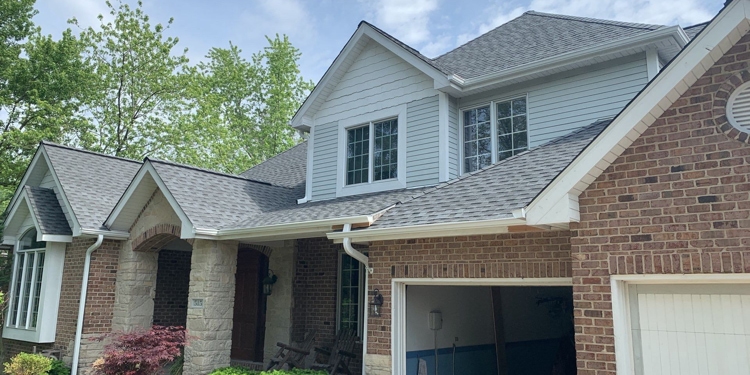
For homeowners living in the Midwest where hail storms have been known to damage roofs, taking on the added expense of impact-resistant roof shingles makes better sense in the long term.
The best Class 4 shingles provide protection from hail and other debris, but many manufacturers also make them in such a way that the wind will not blow them off the roof, which is a problem with less durable shingles. An impact-resistant roof is the preference for any homeowner who wants to gain the upper hand during harsh weather conditions.
Impact-resistant roofing cost vs. long-term value
While the added expense of these more durable shingles can seem like a burden, there is more than one silver lining. For example, insurance providers often give a break on premiums to homeowners with Class 4 shingles, which can help offset the cost of impact-resistant shingles. There is also the added curb appeal to consider.
Long-term cost savings
Thinking long term is almost always the mantra for anything related to finances and the same is true of making an investment in your roof. Yes, Class 4 impact-resistant shingles will cost up to 25% more than traditional shingles, but consider the savings you will enjoy due to the life of the shingles, which can last 30-50 years. There are also savings related to maintenance; Class 4 shingles can take a beating, which means you aren’t paying for repairs every time a hailstorm rolls through.
Impact-resistant shingles provide homeowners with several long-term cost savings:
- Spend less on repairs with Class 4 shingles – Impact-resistant shingles are capable of withstanding wind gusts up to 130 miles per hour.
- Enjoy the discounts your insurance provider offers because your home is better protected.
- Tired of paying for frequent upkeep on your traditional shingles? Impact-resistant shingles do not require that.
Long-term protection
Most homeowners can expect their new roof to last about 20 years, maybe up to 30 years if your home is more protected by the elements than most homes. Homes with Class 4 shingles on them will not need to be re-roofed for 30 years at a minimum. Some warranties on these impact-resistant shingles even last as long as 50 years! That long-term protection means value, because there is a good chance this will be the last roofing project you’ll ever have to pay for.
Because of the way these shingles are constructed, they’re incredibly durable.
The following are the features that provide such a prolonged life for impact-resistant shingles:
- Hail and flying debris bounce off Class 4 shingles rather than penetrate them.
- The Class A fire rating means these shingles are less prone to burning than traditional shingles.
- When the roof remains intact, you don’t have to worry about interior damage (leaks, etc.).
- It’s rare to get a thunderstorm that generates winds any higher than 90 miles per hour, and these shingles are built to resist wind speeds of 110-130 miles per hour.
Longevity is the goal of any home improvement project, so if you want this to potentially be your last roof project, choose Class 4 impact-resistant shingles from a quality manufacturer.
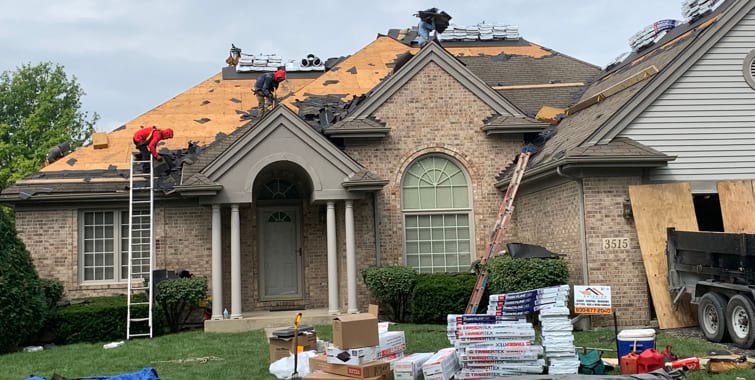
Long-term cost savings and the ultimate in protection are what you get when you choose Class 4-rated shingles. It’s worth the initial investment, because anything that can add value to your home will always provide a handsome return on investment.
From added curb appeal to added value, discounts from insurance providers and the lack of the need for frequent maintenance and repairs – the perks are all there with shingles built to prevent hail damage. Talk to your roofing contractor about the brands that will bring value to your project.
Choose a professional roofer for hail-resistant shingle installation in DuPage County
Hail-resistant roof shingles are a must in regions where storms violently pelt roofs with hail and other debris. A professional roofing contractor, like VIS Exterior, knows exactly what type of shingle to go to when a home needs extra protection. Impact-resistant, Class 4 shingles are built to take a pounding and will bring the extra protection homes need to withstand frequent and heavy hailstorms.
When you work with a seasoned professional, you’ll have a team of experts on your side, guiding you through the options and making that determination if Class 4 shingles are a good option for your home. They will explain the cost differences between these impact-resistant shingles and where you can potentially see a return on your investment via insurance breaks, curb appeal, less maintenance and increased home value.
As you research roofing contractors, look for one that is licensed and insured. Only do business with contractors who have references, offer workmanship warranties and who are local and accountable for their work. At VIS Exterior, our roofing expertise has made us the go-to contractor for installing Class 4 shingles. Contact us and let’s discuss your roofing project and the value we bring to it.
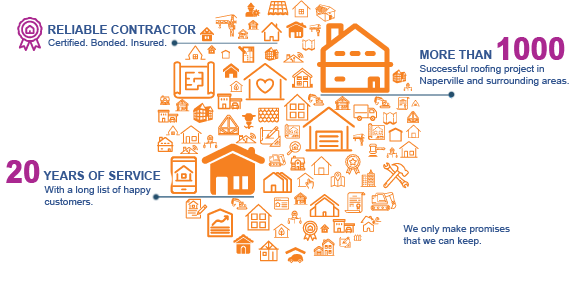
Frequently asked questions about Class 4 shingle roofing
As you look into taking on a roofing project, you’ve probably got a lot more questions than answers, so we have created a FAQ containing all the common questions we get from clients and our expert answers.
What is an impact-resistant roof?
A Class 4 hail-resistant roof is also known as an impact-resistant roof, as these shingles are built to deflect debris in winds from up to 110-130 miles per hour. They are built with extra durability to resist damage, exceeding what traditional shingles can do in terms of protecting your home. The shingles are also made to hold up to high winds, staying put when other shingles would be blown off.
Are all Class 4 shingles impact resistant?
Class 4 shingles, the highest rating of any shingle, must pass a test to earn the Class 4 distinction, so if you’re buying a product that is rated as the highest on the market, then it is impact resistant. Lab testing involves dropping a 2-inch steel ball onto the shingles from 20 feet. If it remains undamaged after two drops, it passes the test.
What Is the difference between class 3 and Class 4 shingles?
Impact resistance is rated from Class 1, the lowest amount of resistance, to Class 4, the highest. The test used is actually numbered by Underwriters Laboratories as 2218, which is why you will see Class 4 shingles sometimes referred to as UL 2218 shingles.
The next best product is the Class 3 shingle, which can withstand the impact of a 1.75-inch steel ball dropped from a lower height. This means that while a Class 3 shingle is sturdy and durable, it won’t hold up to the damage that a Class 4 shingle can take.
Keep in mind that while Class 4 shingles are the best, they will only hold up debris in wind gusts up to 110 or 130 miles per hour, depending on the brand. While storms with higher wind speeds than that are rare, they do occur (tornados, for example) and no shingle will be safe in them.
What does UL 2218 mean?
UL 2218 is the test performed by Underwriters Laboratories, which is why the UL precedes the number. UL, as the company is often referred to, is a global safety science leader that helps companies demonstrate safety, enhance sustainability, strengthen security, deliver quality, manage risk and achieve regulatory compliance. Shingle manufacturers obtaining the UL 2218, Class 4 shingles designation is therefore a highly sought-after accomplishment.
Are Class 4 roofing shingles more wind resistant?
The Class 4 designation is in regard to the shingles ability to resist impact, not wind resistance. However, some shingle manufacturers will include materials in their designs to prevent them from blowing off in wind storms. For example, Owens Corning uses a patented “SureNail” design on their Class 4 shingles that help prevent blow off.
How long does a Class 4 shingle roof last?
There are many elements that influence how long a roof will last, from the manner in which it was installed to the severity of weather that impacts your area. Materials also matter, so the more durable the shingle, the longer the roof will last. It’s not unusual to see Class 4 roof shingle manufacturers offer 30 to 50-year warranties on their products, which speaks to their life expectancy.
A Class 4 impact-resistant roof is going to outlast traditional shingles by a wide margin. For example, most roofing contractors will tell you a traditional shingle will last between 15 and 30 years. But it’s not unusual to expect a minimum of 30 years out of your Class 4 shingles. If you’re working with a quality roofing contractor that uses the best materials and takes pride in their work, there is no reason not to expect a long life for your roof.
What is the warranty on Class 4 roof shingles
Class 4 roof shingles from quality manufacturers have great warranties, some as long as 50 years. Shingles rated below Class 4 get no more than a 30-year warranty. Check with your contractor about which shingle manufacturers offer the best warranties on their products.
How much more expensive are impact-resistant shingles?
Impact-resistant shingles have a robust design compared to traditional shingles, so naturally, they are going to cost more. The impact-resistant shingles cost is roughly 10% to 25% more than anything rated below Class 4.
Take into account that insurance companies offer discounts to homeowners who have Class 4 shingles installed, as well as the longer lifespan of Class 4 shingles, you can offset some of that extra cost.
Does homeowners insurance pay for an upgrade to Class 4 shingles?
Insurance companies will not help you pay to upgrade to Class 4 shingles, but you could see a discount on your premium after you have submitted the proper documentation that you have installed them.
Should you file a claim on a roof that has been damaged and needs to be replaced, the insurance company will pay to replace what is there currently. If your current roof has traditional shingles and you choose to upgrade to Class 4 shingles, you will pay the difference, which is anywhere from 10% to 25% more on the material costs.
Are the same colors available in Class 4-rated shingles?
Class 4-rated shingles come in a variety of colors, but it all depends on the manufacturer. For example, Northgate Class 4 shingles are available in 11 colors, whereas other manufacturers offer between four and six colors in their Class 4 shingles.
Can I change from a 3-tab shingle to a Class 4-rated shingle?
There shouldn’t be any limitations on what type of shingle you use on your home, so you can certainly upgrade from 3-tab to Class 4 shingles. However, keep in mind that 3-tab shingles are the most economical on the market, so if you choose to upgrade to Class 4 shingles, be ready to pay as much as 25% more than you would on 3-tab shingles.
If your upgrade is part of a claim with your insurance provider, you will be responsible for the difference in cost between your 3-tab shingles, which should be covered in your claim, and the more expensive Class 4 shingles, which won’t be covered. Essentially, you’ll be responsible for up to 25% of out-of-pocket costs.
Are Class 4-rated roofing materials always asphalt shingles?
No, many different types of roofing materials can meet the standards for a Class 4 impact-resistant rating. This article discussed upgrading from traditional asphalt shingle to one with a Class 4 rating because that is the most common upgrade, but some people choose to go with concrete or clay tile, metal panel, metal shingle, slate, or composite shake tiles, all of which can have a Class 4 rating.
How can I tell if I have Class 4 shingles?
The easiest way to check if you have Class 4 shingles is to check for the marking on the cellophane on the underside of the shingle. It can vary per manufacturer, but some will say “UL 2818 Class 4.”
Are Class 4 shingles worth the money?
Due to the fact that Class 4 shingles stand up to hail and other fast-flying projectiles, they are worth the money. Instead of having to replace your roof every time it gets hit by a big hailstorm, your roof will remain undamaged. The longer lifespan and insurance breaks you get also add to the value of the product.












